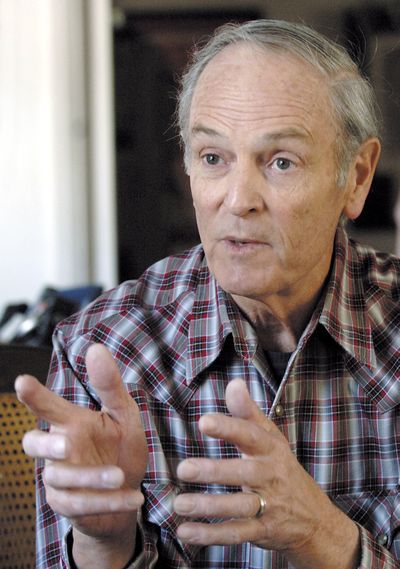Claims cite Cold War radiation
Compensation often tardy for sick people

IDAHO FALLS, Idaho – Nearly 20 years after the Berlin Wall fell, the Cold War’s scars have yet to heal.
Thousands of workers who spent their careers building and maintaining nuclear weapons and reactors in the name of defeating communism now suffer from dozens of diseases linked to the radiation and toxins they faced on a daily basis.
Ken Bailey, of Idaho Falls, lost his pancreas to cancer in 2008. Today, his life is governed by prescriptions and a blood-sugar monitor and insulin pump that keep him alive.
“We spent our third anniversary in the hospital,” said Donna Bailey, Ken’s wife of almost five years. “We used to fiesta, and we used to go to the beach. Now we go to Walgreens.”
Ken Bailey, 69, said he’s never been a smoker or a drinker. He believes his cancer was caused by exposure to radiation and heavy metals during his 33-year career as an electronic technician at the Idaho National Laboratory site.
But his claims for compensation and medical coverage through federal law have been denied by the U.S. Department of Labor. Late last year, Bailey’s doctor wrote a letter to the Labor Department stating his belief that Bailey’s exposure to radiation and toxins “could be contributing factors to the development of his cancer.”
The agency wrote back that Bailey’s doctor failed to establish “a complete and accurate medical and factual history of how (Bailey’s) pancreatic cancer is related to radiological or toxic substances.”
“I’m just desperate,” Bailey said. “I have no one on my side.”
In 2001, Congress enacted the Energy Employees Occupational Illness Compensation Program Act, a law designed to provide compensation and medical benefits for the nation’s Cold War nuclear workers.
If they are diagnosed with certain types of cancer, workers who were employed at one of the U.S. Department of Energy’s several dozen “special exposure cohort” facilities are automatically eligible for a $150,000 compensation payment, as well as medical benefits.
The INL site is not included in the special exposure cohort, meaning workers such as Bailey must demonstrate at least a 50 percent probability that on-the-job exposure caused their illnesses.
Since the compensation program went into effect, only about 13 percent of claims filed with the Department of Labor by INL site workers have resulted in compensation payments.
Nationwide, the approval rate is about 30 percent.
Anne Block, a former claims examiner for the compensation program’s Seattle office, said the National Institute for Occupational Safety and Health spends more money trying to determine eligibility than the Labor Department pays out in compensation based on the institute’s work.
Even when claims are approved, they often take years to process. Sandy Sase said her father, Floyd Snoderly, who worked as a pipe-fitter on the INL site in the early 1950s, died waiting for the Labor Department to approve his claim. Snoderly’s radiation-based compensation was subsequently approved.